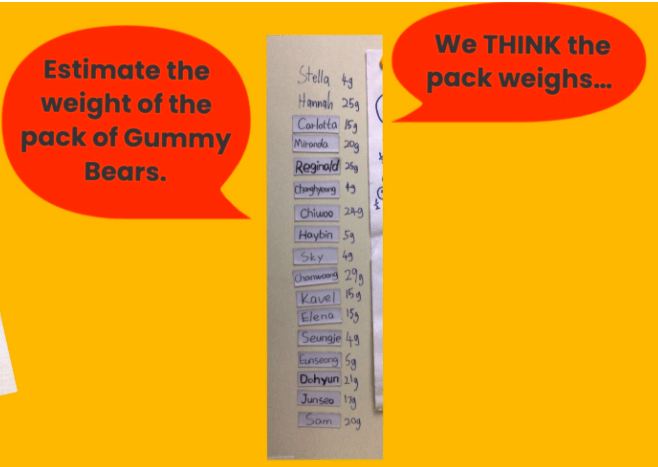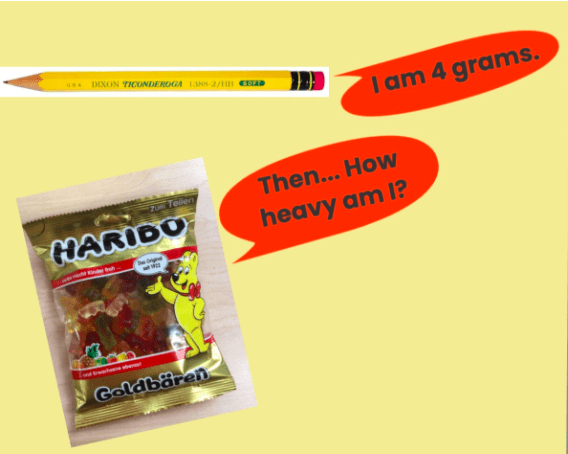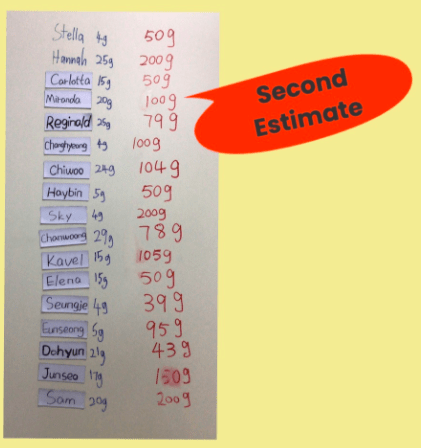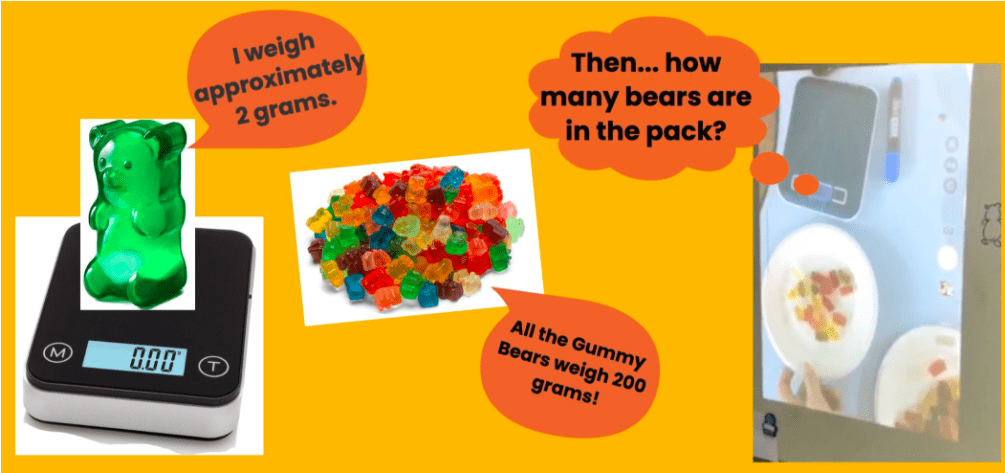Measurement – Weight (mass)
The children have been growing and caring for plants. They have been measuring the growth each day, and documenting their learning in their journals.
We decided to introduce the children to vocabulary they can use to describe and compare ‘growth‘ and ‘change‘.
The children have been identifying, comparing and describing attributes of real objects and situations using quantities, height and length.
The young mathematicians gathered to talk about a new measuring tool in the classroom. We know that mathematicians make predictions, estimate, gather data and improve their work to understand and solve problems.

 Ms. Shemo showed the children a number of different items and a weighing scale with weights.
Ms. Shemo showed the children a number of different items and a weighing scale with weights.



 The mathematicians observed carefully and used their prior knowledge of measurement to make predictions about the weight of the objects. Vocabulary to describe weight was discussed with the mathematicians as they made choices about their observations (voting by standing/sitting).
The mathematicians observed carefully and used their prior knowledge of measurement to make predictions about the weight of the objects. Vocabulary to describe weight was discussed with the mathematicians as they made choices about their observations (voting by standing/sitting).
Then, we compared the weight of the different objects to check if our predictions were correct.
We used pictures and words to describe what we observed.
We know that mathematicians consider problems carefully and then make decisions based on the information and the data they have gathered. The young mathematicians did not touch the different containers of liquid and therefore had to make a reasonable judgement based on what they could observe. They could see right away that knowing how much liquid is in the containers (capacity) allowed them to make a more informed decision.
We tested our new ideas using stones of various sides. We held the weights in our hands and considered what the numbers of the little weights meant. We will continue to explore the concepts weight (mass), length, height, quantity and capacity (volume) in the coming weeks.






























